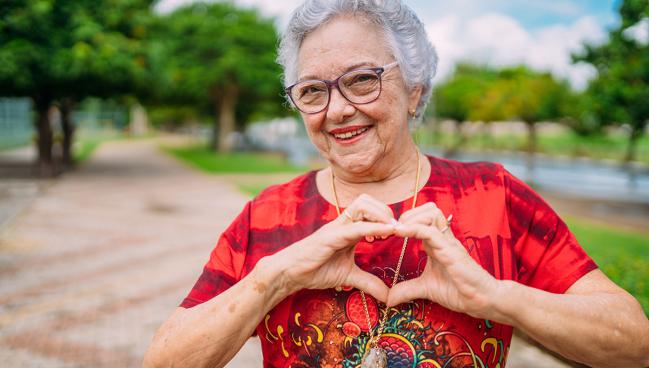‘Excellent’ Outcomes With Mitral ViV Procedures, Even in Lower-Risk Patients
Percutaneous mitral valve-in-valve is growing: should it be expanded to all patients regardless of surgical risk?

PHOENIX, AZ—Clinical outcomes for patients treated with a mitral valve-in-valve (ViV) procedure have continued to get better in the wake of US Food and Drug Administration approval for high-risk patients, with new registry data highlighting declines in both in-hospital and 30-day mortality, as well as improvements in other metrics.
While the FDA approved mitral ViV for patients with degenerated bioprosthetic valves at high risk for surgery, investigators say the benefit was also seen in those at low or intermediate risk for surgery, leading them to conclude that mitral ViV “should be considered the first-line therapy in patients with degenerated bioprosthetic mitral valves” regardless of surgical risk.
“The outcomes were excellent,” Kashish Goel, MD (Vanderbilt University Medical Center, Nashville, TN), who presented the data here at TVT 2023, told TCTMD. “Redo surgery is still associated with very high mortality. In that setting, if the patient is an excellent candidate, I think [mitral ViV] is a reasonable procedure. I also think the FDA should move toward lower and intermediate risk because we’re not going to see any clinical trials in this area. Even the high-risk approval was based on registry studies.”
In total, 831 patients had an STS score < 4 (low risk) and 1,407 had a score ranging from 4 to 8 (intermediate risk). At 1 year, mortality was 19.8% in the 1,723 patients with an STS score > 8 but 10.1% in the intermediate-risk group and 4.9% in the low-risk patients.
Tsuyoshi Kaneko, MD (Washington University School of Medicine in St. Louis, MO), one of two cardiac surgeons participating in the panel discussion after Goel’s talk, emphasized that FDA approval is restricted to high-risk patients at the moment, and there are lingering questions when it comes to a more expansive indication.
“For younger patients, we don’t have the long-term results of these mitral ViV [procedures],” he said, particularly with regard to valve longevity and performance over time. Hemodynamic flow, he added, “is a little different” with mitral ViV than in native mitral valves, which could impact valve durability. “For younger, lower-risk patients, I don’t know if we’re there yet even though we might be thinking about it.”
In general, Kaneko said he would still favor surgical mitral valve replacement in lower-risk patients.
Number of Cases Growing
The FDA approved mitral ViV for high-risk patients with a degenerated bioprosthetic mitral valve in 2017. A prior study, which was published in JAMA Cardiology, showed that ViV with the Sapien 3 (Edwards Lifesciences) was associated with low 30-day and 1-year mortality in 1,500 high-risk patients. In the analysis, transseptal access was associated with lower 1-year mortality than transapical access.
“The numbers have increased so much . . . we’re doing about 1,000 valve-in-valves a year,” Goel told TCTMD. With these numbers, along with the increased comfort with transseptal access and the introduction of the newer Sapien 3 Ultra, the group wanted to take a second look at outcomes with mitral ViV procedures, he said.
The analysis included 4,243 patients (mean age 73 years; 59% female) who underwent mitral ViV at 455 US sites. Goel stressed this was an all-comers population with many risk factors, including cardiogenic shock (3.9%), use of a mechanical support device (2.8%), and end-stage renal disease (5%). Also, 17% were at prohibitive surgical risk and 25% needed an urgent, emergent, or salvage procedure due to their failed bioprosthesis. The mean STS score was 9.2.
Overall, transseptal mitral ViV was associated with a sustained and durable reduction in MR, with 99% of patients having mild or less MR at discharge, 30 days, and 1 year. Mean gradients were stable from discharge out to 1 year.
At 30 days, all-cause and cardiac mortality were 4% and 2%, respectively, while stroke was observed in 1% of patients. There were no cases of left ventricular outflow tract (LVOT) obstruction and no need for mitral valve reintervention. The rate of major vascular complications in the hospital and 30 days was 1%.
At 1 year, the rates of all-cause and cardiac mortality were 13% and 5%, respectively.
Investigators observed significant improvements in in-hospital mortality, LVOT obstruction, and atrial septal defect closure, as well as 30-day mortality, after FDA approval for high-risk patients. For example, in-hospital and 30-day mortality were 6.6% and 8.6%, respectively, between 2015 and June 2017, the period before FDA approval. In the more contemporary era, which spans 2020 to September 2022, these rates were 3.0% and 3.9%, respectively.
Similarly, all-cause mortality at 1 year was significantly higher with cases done prior to FDA approval compared with those done after FDA approval (HR 1.48; 95% CI 1.04-2.10).
Calling the improvement in outcomes “impressive,” Goel said two things are likely contributing. The first is physician proctoring following FDA approval. The second is better patient selection. For example, patients at risk for LVOT obstruction based on CT imaging would likely not undergo mitral ViV today, or operators would first utilize the Lampoon technique as part of the procedure, he said.
“Before the approval, we were doing random things,” he said. Improvements in outcomes and other metrics tended to plateau after the FDA approval, so Goel said the next mission is to determine what now can be done to improve outcomes further.
Volumes Climbing, But Still Early
While overall volumes climbed—up from 141 cases done in 2016 to 915 in 2021—the median number of procedures per center was just five over the 8-year study period (2015-2022). Just seven hospitals performed more than 50 ViV procedures. Given these numbers, Goel said these latest data might still be considered “early experiences” with mitral ViV.
“What’s nice is that even with these low volumes, the outcomes have been great,” he said.
Interestingly, researchers did not observe any relationship between center volume and all-cause mortality at 30 days. Instead, age, need for dialysis, prior aortic valve procedure, cardiogenic shock within 24 hours, and PAD were all significant predictors of death at 1 year.
In addition to these data, researchers examined the relationship between the etiology of the degenerated bioprosthesis and all-cause mortality at 1 year. Patients with mitral stenosis (MS) had the highest overall risk of death (14.8%), higher than that seen in patients with moderate-or-greater MR and those with mixed disease (MS and MR). Overall, patients with mixed etiology had a 33% lower risk of death at 1 year compared with those with MS.
Cardiac surgeon Gorav Ailawadi MD (University of Michigan, Ann Arbor), another panelist, questioned if investigators were able to look at clinical outcomes based on the size of the failed surgical valve, noting that patients with smaller mitral valves tend to not achieve as good a result as those with larger sizes. Those data, said Goel, aren’t available in the TVT registry.
A second presentation, this one by Amr Abbas, MD (William Beaumont University Hospital, Royal Oak, MI), focused on the relationship between transvalvular mitral gradients and mortality in the 4,243 patients undergoing transcatheter mitral ViV and 702 undergoing transcatheter mitral valve-in-ring procedures.
As in TAVI, Abbas said the relationship between mitral gradients and mortality at 1 year is nonlinear and “complex,” noting it was dependent on cardiac index, ejection fraction, and patient comorbidities. In the analysis, compared with those with low and elevated gradients, those with intermediate transvalvular gradients (4 to 7 mmHg) after ViV had significantly improved all-cause mortality at 1 year and improved NYHA class. There was no relationship between transvalvular mitral gradients and either mortality or NYHA class in the setting of mitral valve-in-ring procedures, he reported.
Michael O’Riordan is the Managing Editor for TCTMD. He completed his undergraduate degrees at Queen’s University in Kingston, ON, and…
Read Full BioSources
Goel K. Contemporary outcomes of transseptal mitral valve in valve in the United States. Presented at: TVT 2023. June 9, 2023. Phoenix, AZ.
Abbas AE. Transvalvular pressure gradients and mortality following transcatheter mitral valve in valve and valve in ring. Presented at: TVT 2023. June 9, 2023. Phoenix, AZ.
Disclosures
- Goel reports consulting fees/honoraria from Edwards Lifesciences.
- Abbas reports grant support/consulting fees from Edwards Lifesciences and consulting fees from Lantheus Medical Imaging and Anteris Medical.





Comments